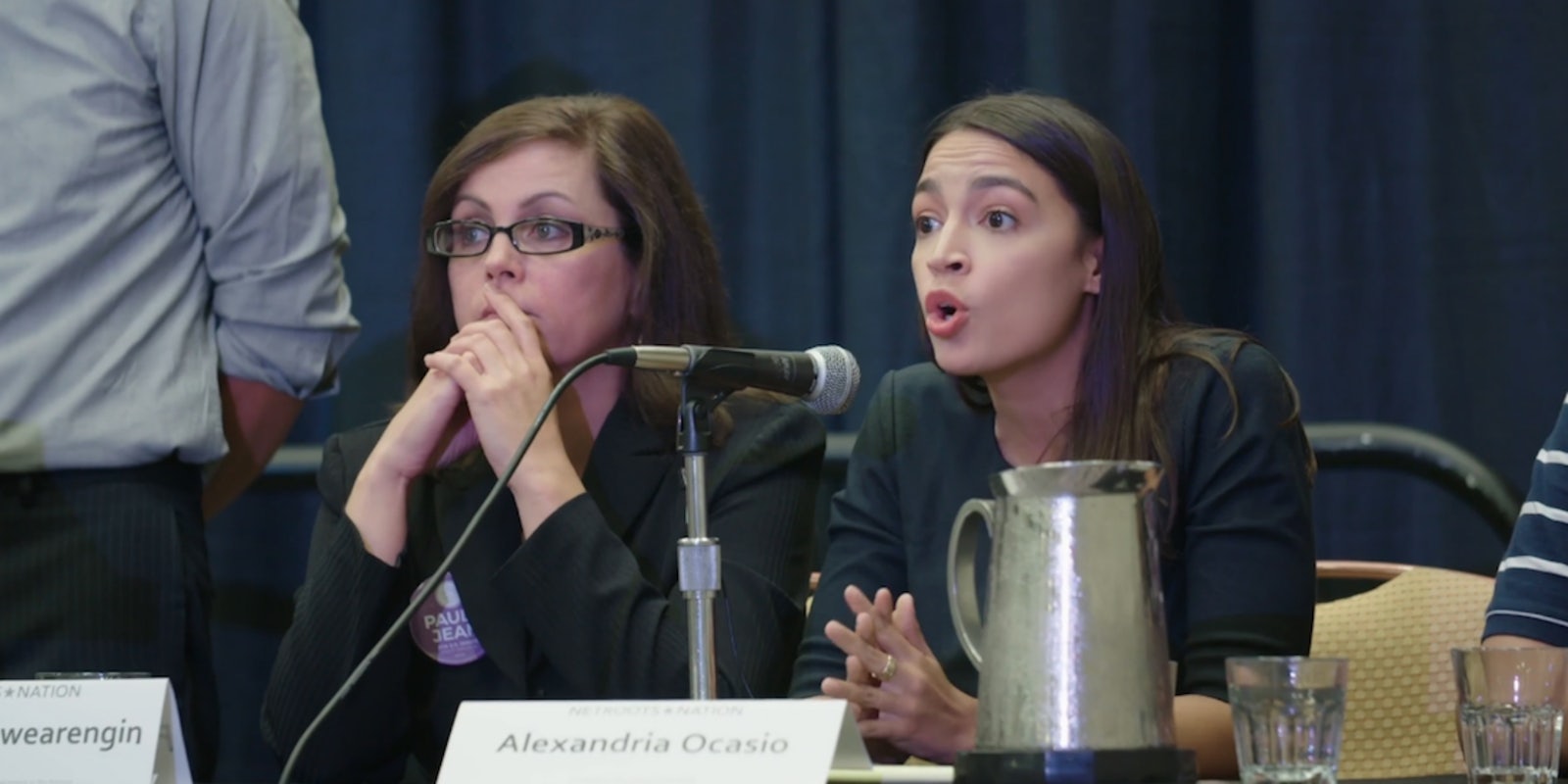The star of Knock Down the House is Rep. Alexandria Ocasio-Cortez (D-N.Y.), and there’s really no way around it. We first join her in the mirror as she puts on makeup and riffs on how male candidates are allowed to dress (a suit or button-up shirt with the sleeves rolled up) versus women. That’s before she even puts her name on a ballot, and director Rachel Lears is there for her history-making surprise victory. Lears started filming Ocasio-Cortez while she was still tending bar, and it really is exceptional how much footage of the political and personal journey she captured.

DIRECTOR: Rachel Lears
STREAMING: Netflix
Rachel Lears captures four women making their first run for office.
It’s a bit surreal watching the documentary now, considering how much of a viral force (and conservative target) AOC’s become in just a few months. But Knock Down the House wouldn’t be complete without three other women who ran for Congress in their respective districts in 2018: West Virginia’s Paula Jean Swearengin, Missouri’s Cori Bush, and Nevada’s Amy Vilela. Lears gives us a real-time look at the campaign trail hustle for everyday citizens and the mechanics of running for office.
She also shows the emotional stakes: Swearengin is tired of her neighbors being diagnosed with cancer from breathing in coal pollutants; Vilela lost her daughter after she was denied medical care for not having proof of insurance; Bush is a nurse who was activated by protests in Ferguson. All of the women featured are up against men who’ve held their positions for years (in some cases, decades).
Ocasio-Cortez’s opponent Joe Crowley is zeroed in on the most: He’d held the same position in New York’s 14th congressional district unopposed for 14 years and doesn’t think she’s enough of a threat to show up to a scheduled debate, instead sending a proxy to defend his views. When he finally does show up to a debate and Ocasio-Cortez tramples him, Lears captures the moment Crowley seems to know he’s in trouble, nervously rolling up his sleeves. (Ocasio-Cortez called it.)
Knock Down the House catches the subtle and not-so-subtle sexism at work: a man telling Crowley at a parade that he’s not voting for that “stupid woman” who’s running against him; Swearengin being told to “keep smiling until you start talking” before a speech. Vilela details how people told her to go back to both Russia and Mexico. With Ocasio-Cortez, Lears gets more personal details: archival footage of her as a kid, a backstory about how her father inspired her to get involved in politics, fly-on-the-wall footage of her and partner Riley Roberts, her panic on the night of the election.
The film, initially funded on Kickstarter, was purchased by Netflix earlier this year for a stunning $10 million, and it pairs nicely with another midterm film, Running with Beto, which debuted at SXSW a week before as O’Rourke announced his run for president. It’s clear there’s a desire to see these feel-good, grassroots stories of the progressive movement, even as the rapidly changing landscape leading to 2020 recontextualizes them. After a Knock Down the House SXSW screening, Vilela (who, like Bush and Swearengin, lost her initial race) said she’s not done, and pointed out that after this wave of historic wins, now presidential candidates are talking about things like the Green New Deal. “The real power is not the money, the power is the people,” she said.
That mindset is all over Knock Down the House, but the true test will be to look back at the film in five or even 10 years to see how far the people shifted the power.
READ MORE:


